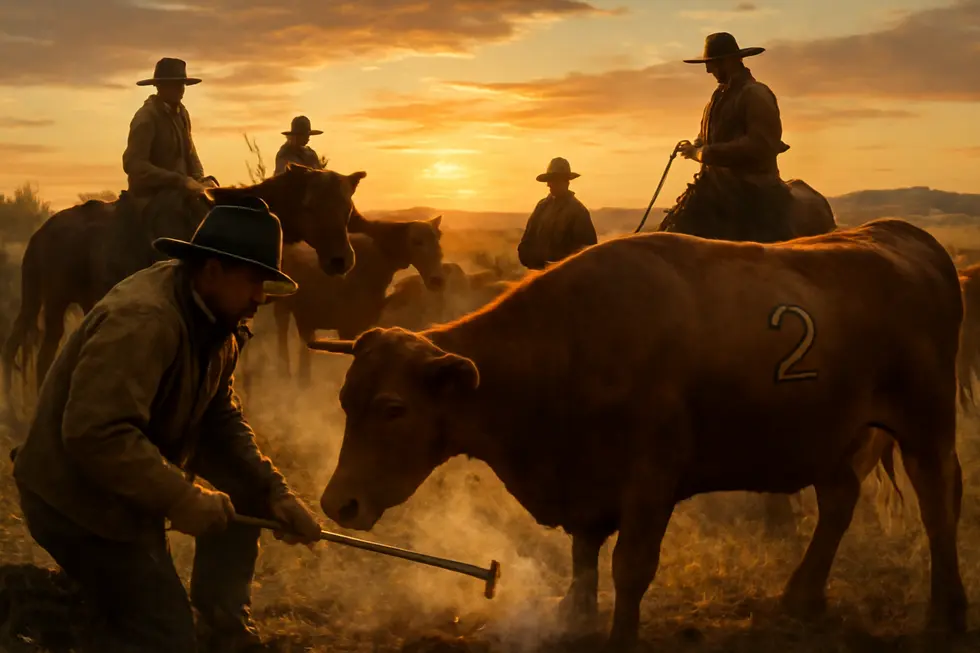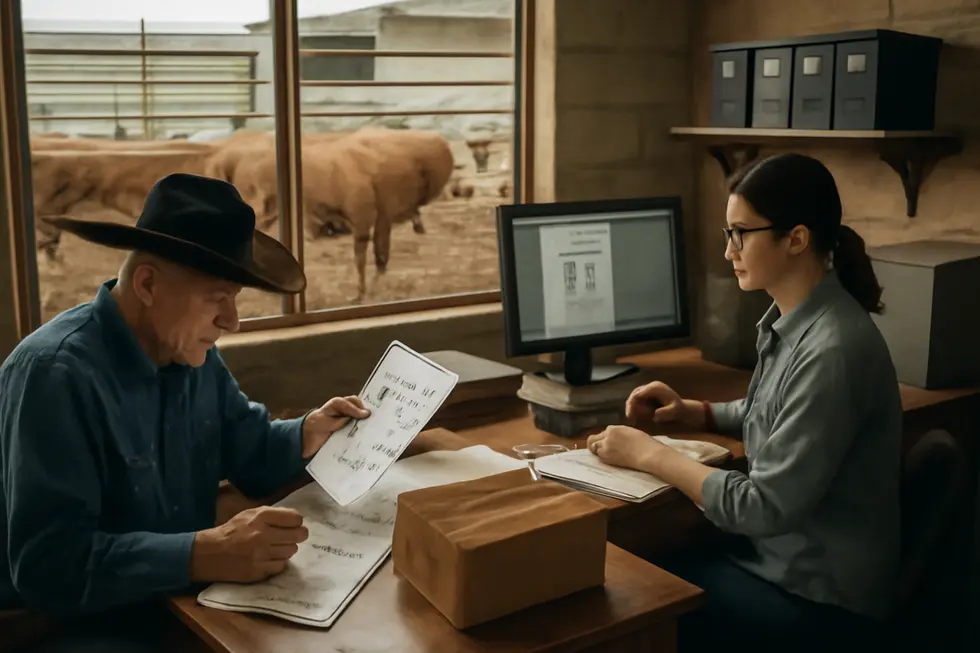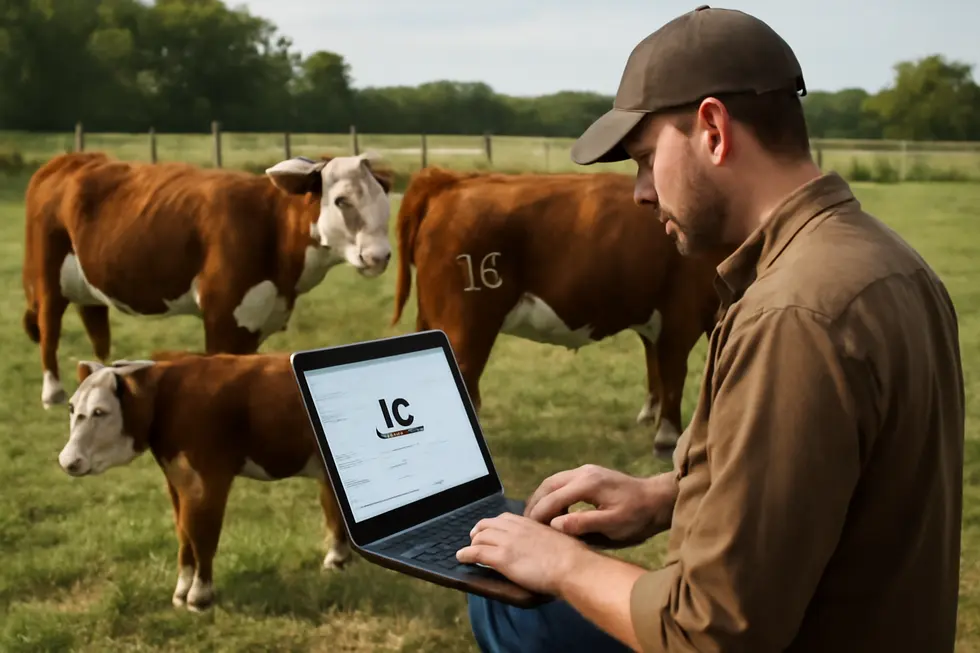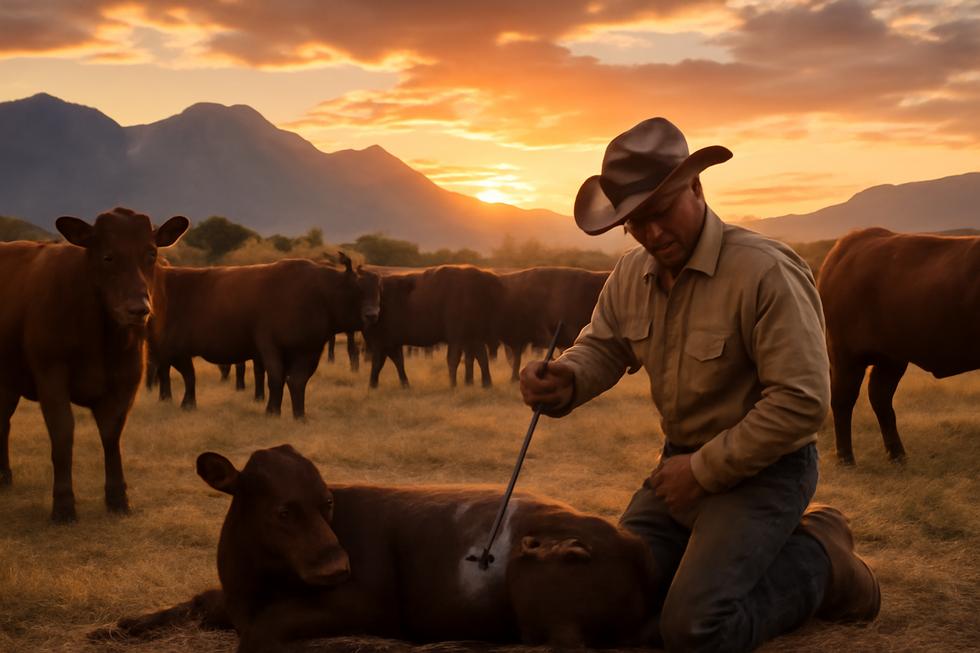Introduction
Livestock brands serve as more than just marks on cattle—they are vital legal tools that define and protect ownership in the ranching industry. For business owners engaged in livestock or related agricultural ventures, understanding the depth of livestock branding is crucial for preventing theft, resolving disputes, and maintaining a solid ownership record. This exploration begins by tracing the historical roots and legal significance of livestock brands, establishing their foundational importance. It then moves into the operational roles of brand offices that regulate and enforce brand registration and usage. The process of designing and crafting custom brands comes next, illuminating how unique, personalized marks are brought to life. Finally, we examine the modern applications and protective functions that make livestock brands an indispensable asset for business continuity and legal proof of ownership. Together, these chapters provide a comprehensive understanding tailored to the needs of livestock business owners seeking to leverage this powerful identification method.
Tables of Contents
Chapter 1: Historical Development and Legal Significance of Livestock Brands
- From Ancient Marks to Complex Symbols: The Evolution of Livestock Branding
- Legal Structures Forging Ownership Security in Livestock Branding
- Economic Roots and Ranching Legacy: How Livestock Brands Shaped Western Livelihoods
- From Open Ranges to Legal Registers: How Regulatory Practices Shaped Livestock Brand Enforcement
Chapter 2: Operational and Regulatory Role of Livestock Brand Offices
- Essential Roles of Livestock Brand Offices in Ownership Verification and Brand Oversight
- Ensuring Compliance and Ownership Security: Regulatory Enforcement by Livestock Brand Offices
- Seamless Cooperation and Communication: Strengthening Livestock Brand Offices to Safeguard Ownership and Monitor Movement
- Bridging Tradition and Modernity: Infrastructure Empowering Livestock Brand Offices
Chapter 3: Design and Creation of Custom Livestock Brands
- Crafting Unique Symbols: The Art and Meaning Behind Custom Livestock Brand Design
- Securing Ownership: Legal Registration and Enforcement of Custom Livestock Brands
- Crafting Identity: Traditional and Modern Methods in Livestock Brand Creation
- Balancing Tradition and Innovation: Symbolism, Technology, and Economic Value in Custom Livestock Brands
Chapter 4: Modern Applications and Protection Functions of Livestock Brands
- Harnessing Technology: Enhancing Livestock Brand Security and Management
- The Economic Backbone: How Livestock Brands Secure Markets and Promote Sustainability
- Navigating Legal and Geopolitical Systems That Secure Livestock Ownership
- Livestock Brands as Cultural Emblems and Legal Guardians in Contemporary Ranching
Chapter 1: Historical Development and Legal Significance of Livestock Brands

1. From Ancient Marks to Complex Symbols: The Evolution of Livestock Branding
Livestock branding traces back millennia, originating with ancient civilizations such as Egypt around 2000 BCE, where hot-iron marks identified cattle ownership. This early practice traveled to North America in the 16th century, when Spanish explorers including Hernán Cortés introduced branding using symbolic marks, like Christian crosses, to mark their herds. Over centuries, what began as simple ownership markings evolved into sophisticated symbols resembling heraldic emblems, serving not only to prove ownership but also to track breed lineage, indicate age, and help manage livestock health.
This evolution reflected the growing complexity of ranching and the critical need to differentiate and legally recognize livestock across expansive territories. The establishment of government oversight further transformed branding into a formalized legal process. States like Arizona implemented strict registration rules to prevent duplication and ensure that each brand symbol was unique and legally protected. Consequently, brands became recognized property rights, enforceable under law to deter theft and resolve ownership disputes. The enduring nature of livestock branding illustrates its critical role not just as a tradition but as an essential element of agriculture and property law.
2. Legal Structures Forging Ownership Security in Livestock Branding
Livestock branding has long functioned as a critical instrument in securing ownership and mitigating disputes, tracing origins from ancient civilizations through its adoption in North America by Hernán Cortés in the 16th century. Over time, as the cattle industry expanded, branding evolved beyond mere identification, embodying legal recognition and property rights. Governments responded by formalizing this through brand registration laws, which require livestock owners to register unique marks to prevent duplication and unauthorized use. These legal frameworks not only outlaw brand tampering but also uphold ownership claims, positioning brands as enforceable property identifiers.
For example, in states like Idaho, strict regulations mandate breeders and owners to maintain a registered brand and comply with inspection protocols during livestock transactions. A designated brand inspector oversees this system to assure lawful ownership transfer and reduce fraud. Breaches in brand regulations can result in severe penalties, reinforcing the system’s integrity and protecting ranchers’ investments.
Together, these legal mechanisms preserve the trust essential to livestock commerce and safeguard an agricultural tradition that merges heritage with property law. This structured protection guarantees that livestock branding remains a cornerstone asset within ranching communities.
For further insight on legal protections surrounding brand marks, referencing authoritative guides on trademark and intellectual property law offers valuable parallels to branding rights.
3. Economic Roots and Ranching Legacy: How Livestock Brands Shaped Western Livelihoods
Livestock brands have long stood as more than mere marks of ownership; they encapsulate the economic foundation and enduring legacy of ranching communities. Originating in ancient civilizations and solidified in the American West, branding arose from the need to protect valuable assets in expansive open ranges where cattle freely roamed. This system prevented theft and disputes by legally linking a specific symbol to each owner’s livestock, ensuring economic security in a livelihood deeply tied to land and livestock.
The heritage of ranching is inseparable from branding practices, especially in regions governed by open range laws that favor traditional grazing methods. Such laws shift responsibility for fencing from ranchers to landowners, lowering overhead costs and preserving historic grazing patterns that support ecological balance. Brands offer a low-cost yet permanent method of identification essential for tracking animals through sales, shipments, or disputes, thus sustaining both market trust and rural economies dependent on livestock production.
Today, while technology offers alternatives like microchips, the cultural and economic importance of branding endures. It remains a vital tool that reflects the ranching way of life, strengthens property rights, and underpins the agricultural economy by maintaining clear ownership and promoting sustainable practices. This continuity of tradition and legal clarity underscores the significant role brands play in ranching heritage and economic stability.
For those interested in property rights and business asset protection, understanding livestock branding offers valuable insights that parallel trademark and ownership law systems.
4. From Open Ranges to Legal Registers: How Regulatory Practices Shaped Livestock Brand Enforcement
Livestock branding emerged as a vital regulatory system in the 19th century American West, where the open range allowed multiple herds to intermingle freely. In this environment, brands were indispensable tools for asserting ownership and deterring theft. Ranchers registered distinct brands with local authorities, creating public records that courts later relied on to resolve ownership disputes. This tradition evolved into formalized state registration systems ensuring brand uniqueness and legal backing.
The legal power of a livestock brand extends beyond identification; it represents an intangible property right protected by statutes and upheld by courts. Brands can be transferred, inherited, and licensed, making them central to the legal framework surrounding livestock ownership. Regulatory bodies enforce these rights through brand registration, mandatory inspection during sales or transport, and stringent penalties for brand tampering or forgery.
While fencing and modern ranching methods changed cattle management, they did not diminish the brand’s legal prominence. Today, state livestock offices oversee the inspection and documentation processes that maintain these protections. This regulatory backbone not only defends ranchers from theft but also integrates with animal health and traceability systems, reinforcing the brand’s enduring role in livestock commerce and law.
For a detailed look into the registration process, see more on cattle brand registration guidelines and laws.
Chapter 2: Operational and Regulatory Role of Livestock Brand Offices

1. Essential Roles of Livestock Brand Offices in Ownership Verification and Brand Oversight
Livestock Brand Offices form the backbone of livestock ownership authentication and brand regulation. Central to their operation is the meticulous registration and management of unique brands that serve as legally recognized marks of ownership. These offices maintain expansive databases linking brands to their rightful owners, ensuring that each mark remains exclusive to prevent duplication or fraud. Whenever livestock are bought, sold, or transported, the brand on the animal is cross-checked against these records to verify rightful ownership. This process substantially curbs theft and disputes, offering ranchers legal assurance. Beyond registration, these offices handle the transfer or cancellation of brands, adapting records to ownership changes and providing a clear, updated lineage of brand history. They also enforce regulations by investigating allegations of brand misuse or livestock theft, often collaborating with law enforcement to uphold legal protections. Comprehensive record-keeping supports disease control, traceability, and market integrity, linking the branding system to wider agricultural regulatory frameworks. While they do not manage daily livestock care, their administrative functions underpin the operational stability of livestock industries, fostering trust and transparency within the marketplace. For further context on brand protection and legal exclusivity, exploring related discussions on trademark protection and business name rights can provide valuable insights.
2. Ensuring Compliance and Ownership Security: Regulatory Enforcement by Livestock Brand Offices
Livestock Brand Offices serve as pivotal authorities in upholding state livestock laws through comprehensive regulatory enforcement. By overseeing the registration, recording, and inspection of livestock brands, these offices provide essential legal proof of ownership that safeguards ranchers’ property rights. Before livestock are sold, transported, or slaughtered, inspectors verify proper brand ownership to prevent unauthorized transfers and theft, ensuring all transactions comply with state statutes. They meticulously track brands during animal movement, coordinating with local law enforcement and animal protection agencies to respond to lost or stolen livestock reports and enforce animal welfare standards. Brand registration itself is a critical legal mechanism; failure to renew or update a brand can lead to abandonment, opening opportunities for misuse. Protecting against such risks, brand offices maintain detailed registries and offer legal recourse for owners against unauthorized brand use. Beyond ownership verification, these offices support humane livestock management by enforcing transport laws like the Twenty-Eight Hour Law and collaborating across agencies. This layered enforcement guarantees traceability, ownership security, and animal welfare within the livestock industry. For a closer look at state-specific brand enforcement and inspection practices, see the detailed guidance on cattle brand registration.
3. Seamless Cooperation and Communication: Strengthening Livestock Brand Offices to Safeguard Ownership and Monitor Movement
Livestock Brand Offices play a pivotal role in ensuring ownership integrity and monitoring livestock movement through comprehensive coordination with various agencies. These offices conduct brand inspections to verify ownership before animals are sold, transported, or slaughtered, effectively deterring theft and unauthorized sales. Maintaining detailed records of livestock origin, brand identification, and destination is central to their regulatory duties, providing critical traceability for investigations.
To uphold these standards, brand offices collaborate closely with state and federal agencies, law enforcement, and livestock markets. Immediate communication about ownership changes and market operations ensures transparency and regulatory compliance. This interagency engagement extends to law enforcement partnerships, where brand offices support investigations and prosecutions of livestock theft, bolstering legal frameworks against cargo theft that includes cattle and other animals.
Additionally, public and private stakeholders often participate in advisory groups that address market challenges and facilitate information exchange. These collaborative networks enhance regulatory coherence and promote efficient management across jurisdictions. Through such integrated efforts, Livestock Brand Offices strengthen oversight capabilities, protect ranchers’ property rights, and support the ranching community in maintaining economic stability.
For insight into the operational frameworks that shape these practices, resources like the Utah Brand Inspection Program offer concrete examples of interagency coordination and enforcement.
4. Bridging Tradition and Modernity: Infrastructure Empowering Livestock Brand Offices
Livestock Brand Offices operate at the intersection of longstanding traditions and evolving administrative demands, relying on a blend of conventional practices and emerging technologies. Primarily, these offices uphold ownership verification and traceability through physical brand inspections—a method still central to programs like Utah’s Brand Inspection. Although advanced digital tools, such as RFID systems and herd management software, show promise in enhancing accuracy and efficiency, widespread integration within state brand offices remains limited. This cautious technological adoption reflects broader agricultural challenges, where digital infrastructure often lags, especially outside large-scale operations. Administratively, Livestock Brand Offices feature a robust structure encompassing brand registration, inspection programs, regulatory enforcement, and animal health coordination. This network, governed by codified laws and clear protocols, ensures uniqueness in brands, facilitates ownership transfers, and monitors compliance. Key divisions collaborate to protect livestock rights, maintain market access, and respond effectively to theft or loss. While technological modernization is a prospective path to complement these efforts, the existing administrative frameworks provide a solid backbone for operational integrity. Expanding digital traceability solutions alongside traditional methods could further strengthen brand offices’ ability to safeguard livestock provenance. This synergy of established regulation and emerging innovation embodies the evolving stewardship role that Livestock Brand Offices fulfill today. For a deeper look into legal protections surrounding branding and intellectual property aspects, see trademark2go.com/trademark-protection-business-name-logo.
Chapter 3: Design and Creation of Custom Livestock Brands

1. Crafting Unique Symbols: The Art and Meaning Behind Custom Livestock Brand Design
Creating a custom livestock brand is an intricate process that blends graphic design principles with symbolic meaning to produce a mark that is both functional and deeply representative of its owner. The foundation lies in designing a clear, distinctive shape that can withstand the physical branding process and remain legible on the animal’s hide. To achieve this, designers employ vector-based graphic techniques to ensure every line and curve translates crisply onto the branding iron, avoiding overly complex details that may blur or fade over time.
Beyond visuals, symbolism plays a pivotal role in crafting a brand that communicates identity, heritage, and values. Common motifs include stylized animals, geometric forms, or initials that reflect the ranch’s history or mission. For example, a leaf might symbolize a commitment to sustainable agriculture, while an angular design might allude to strength and durability. The choice of symbol not only distinguishes livestock ownership but also fosters emotional connection and trust among consumers and peers.
Modern design tools, such as digital illustration software, empower creators to experiment with variations efficiently, refining concepts until the brand perfectly captures its intended meaning and aesthetic. These solutions also facilitate the preparation of branding irons and ensure compliance with regulatory uniqueness requirements. This thoughtful integration of graphic artistry and symbolism results in marks that serve as powerful legal identifiers and lasting legacies for livestock owners.
For those interested in further refining their branding strategy, exploring resources on trademark protection can provide essential insights on safeguarding these unique designs, which is crucial in maintaining exclusive rights within the livestock industry.
2. Securing Ownership: Legal Registration and Enforcement of Custom Livestock Brands
The creation of a custom livestock brand goes beyond artistic design—it is a legal instrument that establishes exclusive ownership rights over livestock. For a brand to serve its purpose effectively, it must be unique within the governing jurisdiction, preventing confusion or conflict with existing registered marks. This uniqueness is verified through a formal registration process where the brand design, along with the owner’s details and the precise location on the animal where the brand will be applied, is submitted to the designated state or regional livestock brand office. Registration often involves a waiting period during which objections can be filed, reflecting the brand’s significance as a legal identifier.
Once recorded, the brand owner secures exclusive rights to mark their livestock accordingly, and unauthorized usage constitutes legal infringement. Transfer of ownership requires formal documentation and registry updates to maintain the clarity of title. Additionally, brands must only be applied in registered locations on the animal; improper application may be treated as unauthorized use, undermining the brand’s legal validity. Regular brand inspections are a common protective measure, particularly when livestock change hands or cross jurisdictional boundaries, ensuring compliance and preventing theft or misrepresentation.
In essence, registered livestock brands function much like trademarks, providing tangible, exclusive intellectual property rights connected to ranching. Ranchers benefit from this well-regulated system that safeguards their assets and supports sustainable livestock management. For a detailed framework of these legal protocols, the Arizona brand registration guidelines offer an instructive reference. This integration of design and legal registration underscores the critical role of custom brands in protecting ownership rights within the livestock industry.
3. Crafting Identity: Traditional and Modern Methods in Livestock Brand Creation
Creating a custom livestock brand is a process that merges meaningful symbolism with enduring physical techniques. Brand designs frequently incorporate distinct shapes—circles for unity, stars for guidance, crosses for faith, or arrows to symbolize protection—interwoven with letters or initials to directly represent a ranch’s heritage and identity. These elements are carefully balanced to form unique, recognizable emblems that hold personal and cultural significance.
Physically creating these brands involves several established methods. Hot iron branding remains a traditional choice, where heated custom-made irons etch permanent scars on the animal’s hide. In contrast, freeze branding offers a more humane approach by chilling irons with liquid nitrogen to alter hair pigment without burning. Tattoo branding, usually applied inside ears or lips, provides a discreet yet lasting identification. For some species, paint or dye offers temporary marking solutions, while ear notching serves primarily swine identification.
Modern technology increasingly complements these classic techniques. Implantable microchips and RFID systems embed digital tracking capabilities, enabling seamless integration of physical marks with electronic identification. This fusion enhances traceability and regulatory compliance while preserving the time-honored elements of livestock branding. Sourcing custom branding irons and understanding symbolic design principles enrich ranchers’ ability to craft meaningful marks that endure both in tradition and innovation.
For ranchers seeking legal insights on protecting unique marks like brands, resources on trademark protection for business names and logos provide valuable guidance.
4. Balancing Tradition and Innovation: Symbolism, Technology, and Economic Value in Custom Livestock Brands
Custom livestock brands uniquely blend tradition with modern advances, serving as powerful emblems of heritage and ownership. The design often reflects a rancher’s identity through meaningful shapes—crosses for faith, stars for guidance, arrows for direction—that convey stories and values beyond mere identification. This symbolic depth intertwines with practical concerns, as brands must remain clear and distinctive when burned onto an animal’s hide, ensuring easy recognition.
While traditional branding retains cultural significance, emerging technologies like microchipping and electronic tagging provide enhanced precision, complementing brands rather than replacing them. This integration signals a broader trend toward safeguarding livestock through layered methods, reflecting both respect for legacy and an embrace of innovation. Economically, a well-crafted brand serves as intellectual property, reinforcing a ranch’s reputation and consumer trust. Such brands can elevate livestock value and even support rural economies by attracting interest tied to the ranch’s identity.
Thoughtful design in custom branding balances symbolism with visibility, often using earthy tones and simple forms akin to agricultural logos. This careful crafting ensures that brands remain timeless marks of ownership, legacy, and economic strength, bridging centuries-old ranching traditions with contemporary identification needs. For ranchers looking to protect and promote their brand, understanding the interplay of design, symbolism, and modern tools is essential—and exploring trademark protection strategies can offer further security.
Chapter 4: Modern Applications and Protection Functions of Livestock Brands

1. Harnessing Technology: Enhancing Livestock Brand Security and Management
The evolution of livestock branding is marked by a transformative integration of cutting-edge technologies, reshaping how brands protect and manage livestock today. Traditional brands, long relied upon as tangible marks of ownership, now complement advanced electronic identification tools like RFID tags and biometric sensors. These innovations facilitate precise tracking of animals’ health, location, and productivity, reinforcing brand authenticity and combating theft with unprecedented accuracy.
Moreover, drones equipped with high-resolution imaging revolutionize herd monitoring, enabling ranchers to oversee vast pastures remotely, promptly detecting problems that threaten livestock welfare. Coupling this aerial surveillance with AI-powered analytics leads to predictive health insights and automation of routine care, enhancing animal well-being while preserving the integrity of livestock brands.
Robotics and automated feeding systems further elevate management standards by delivering personalized care and maintaining consistent product quality. Integrating GIS and IoT technologies allows for detailed mapping of livestock movements and environmental conditions, allowing rapid responses to potential threats or anomalies. Beyond these functionalities, emerging digital platforms and blockchain solutions secure ownership records, ensuring transparent supply chains and reducing fraud risks.
Together, this suite of technologies transcends traditional branding, creating a comprehensive, data-driven ecosystem that not only safeguards livestock ownership but also advances sustainable, efficient ranching practices. For those interested in legal protections surrounding ownership marks, exploring trademark rights can provide additional layers of security for branding efforts.
2. The Economic Backbone: How Livestock Brands Secure Markets and Promote Sustainability
The Economic Backbone: How Livestock Brands Secure Markets and Promote Sustainability
Livestock brands play a vital economic role in modern agriculture by ensuring clear and reliable identification of animals, which is crucial for ownership verification and market trust. This identification strengthens traceability systems across the supply chain, supporting not only improved herd management but also more effective disease control. Enhanced disease monitoring reduces losses and safeguards consumer health, creating resilience in livestock markets.
By legally establishing ownership, brands help to protect ranchers’ assets against theft and misappropriation. This legal protection stabilizes market confidence, facilitating fair trade and enabling producers to meet stringent regulatory and quality standards. Transparency brought by branding also promotes accountability, which can increase consumer trust and broaden market access.
Moreover, livestock branding integrates seamlessly with sustainable agricultural practices. It underpins circular bioeconomy efforts by enabling efficient tracking of animal byproducts and waste, fostering resource-efficient livestock systems that balance economic and environmental goals. These contributions highlight how modern branding systems combine traditional asset protection with innovations that advance economic stability and sustainability in ranching.
Such functions emphasize the importance of livestock brands not simply as marks of ownership, but as essential economic tools supporting regulated, efficient, and environmentally conscious livestock production.
For further insights on the legal foundations supporting such protections, explore trademark protection for business names and logos.
3. Navigating Legal and Geopolitical Systems That Secure Livestock Ownership
Livestock brands are entrenched within multifaceted legal and geopolitical systems designed to safeguard ownership and ensure responsible livestock management. These systems require that brands be officially registered with designated state or regional authorities, such as the Utah Brand Office, which recognize these marks as definitive proof of ownership. Such registration not only protects ranchers’ property rights but also preserves ranch heritage and legacy.
The frameworks further mandate brand inspections during critical junctures like sales, interstate transport, or slaughter. These inspections verify ownership and act as a deterrent against theft, with non-compliance carrying legal penalties. Brand inspectors play a pivotal role, both in confirming rightful ownership and in responding swiftly to reports of lost or stolen animals, thereby reinforcing the protective purpose of branding.
Beyond brand-specific laws, some countries integrate livestock branding within wider agribusiness legal frameworks. For instance, Brazil combines branding regulations with contract enforcement mechanisms that cover leasing and collateral tied to livestock, ensuring financial and legal protections extend beyond physical identification. Variations in these legal approaches reflect differing governance models, economic contexts, and cultural traditions across regions.
Animal welfare statutes complement branding laws by regulating transport and humane treatment, indirectly supporting the integrity of branded livestock. Together, these intertwined legal and geopolitical frameworks form a robust network that secures ownership rights, upholds legal transactions, and discourages theft, illustrating the enduring significance of livestock branding in modern agriculture.
For additional insights on protecting unique marks and ownership, readers can explore comprehensive guidance on trademark protection for business names and logos.
4. Livestock Brands as Cultural Emblems and Legal Guardians in Contemporary Ranching
Livestock brands today transcend their basic role as ownership markers, embodying rich cultural narratives and legal safeguards integral to ranching communities. Originating from ancient practices and evolving through centuries, brands carry symbolic designs that tell stories of family heritage, regional pride, and enduring values. Circles often evoke unity, while bars and lines signify strength—these elements transform brands into living heirlooms that connect generations.
Legally, livestock brands act as registered trademarks ensuring exclusive rights to ownership and aiding in theft prevention. Their official registration prevents duplication and guarantees traceability across vast ranching landscapes. This legal framework is crucial in open-range environments, where livestock mobility demands clear, verifiable identification.
Beyond protection, brands participate in preserving livestock biodiversity. Modern conservation efforts link molecular genetics with traditional branding practices to uphold breed varieties and cultural knowledge. This fusion supports sustainable agriculture while reinforcing community identity. As symbolic marks and legal instruments, livestock brands bridge practical management with cultural preservation, reflecting a legacy that continues to adapt and thrive in contemporary livestock stewardship.
For a deeper understanding of legal protections related to identifying marks, exploring trademark protection principles can provide valuable context.
Final thoughts
Livestock brands remain a cornerstone of ownership protection in the ranching and agricultural industries. Their evolution from simple marks to legally registered symbols underscores their enduring importance in safeguarding business assets. By understanding the historical context, regulatory frameworks, design considerations, and modern applications, business owners can make informed decisions that enhance security and preserve the legacy of their livestock enterprise. Embracing livestock branding strategically not only prevents theft and disputes but builds a foundation of trust, verification, and continuity for any ranching operation.
Your IP is the foundation of your success – let’s protect it together before it’s too late. We can’t wait to help you turn your ideas into legally secured assets.
About us
undefined


